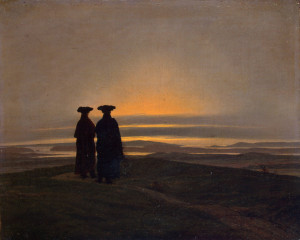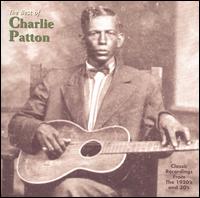“You must be doing this all as a labor of love.” It’s an oft-heard comment that has to be politely stomached. The truth lies somewhere else. I utterly hate, loathe, and despise all who trash Music by dragging it into an inoffensive state of near-death, of their dousing perfume onto a putrefaction they produce in the name of culture by eliminating noise. Noise is as beatific as silence.
Ossip Mandelstam referred to a shum vremeni – the noise of Time. I object to Time getting formaldehyded in the way a noble animal is neutered so as to behave more docilely and blend into living room politeness: a metaphoric reminder of the repressed pathologies at large being masked in alleged civility.
For far too long, and with far too few signs of improvement on the horizon, the teeming masses containing the sounds of time are deprived of their noise, a brutal violation that destroys their higher regions where colors of overtones and their refractions ecstatically dance in an ether that purveys music into selected souls who channel it through their bodies by touching something or releasing it from their mouths.
We have a body of beings captured alive in their sounds, lives fully lived, usually more so than most of us indigenes. What their legacies offer to anyone caring for music-making is as indispensable as it is proscribed by larded lairds who limit themselves to paper when attempting to come to terms with something that cannot be expressed outside of itself through any other media. Think of how Delacroix described his friend Chopin:
“The master knows well what he is doing. He laughs at those who pretentiously speak of people and things by means of imitative agreement. He does not know this puerility. He knows that music is a human feeling and human manifestation. It is a human soul that thinks, it’s a human voice that expresses itself, when “surrounded”, attacked so to speak by his emotions, conveys and expresses them through his feelings. He does not have to define what causes him to feel, for music is beyond that. Therefore, music cannot specify them, it does not pretend to. Here is his greatness: in no way could it ever speak in prose.”
Imagine being told in your eagerness that in order to learn the history of Art, all one needed would be a smeary photocopy of any old painting, even better if it’s a black and white run-off, ’cause you can get a color code with numbers superimposed over the picture: just hover over it with your finger and head downward to the inset. And please do not under any circumstances ever visit any museums to view the originals. All you need is included on your handout. And this is what happens to Music when recordings are omitted as a resource during professional training, leaving one a prisoner of the page and locked into a dullness of present-day mindsets. But there were damn good reasons for shellac’s banishment. Before the newly rediscovered an adored vinyl, this form of bakelite was the media for containing sound.
Early pioneering attempts to elevate an obsolete media to resemble clean vinyl playback bore muffled mouthfuls stripped of any bacon frying background noise that ended up leaving the poor music reduced to cultural roadkill: a body that once no longer displays signs of life. So many musicians whose artistry built cultures and changed lives were being bound and gagged out of the fear that an imaginary multitude would experience extreme discomfort in hearing the hoary sounds that contained the genuine moment captured in the only possible way.
Take Rachmaninoff for example. A musical God who acted on a whim to become a concert pianist after having fled the Soviets for safety in the United States. Turning down an invite to conduct the Boston Symphony, Rachmaninoff put together recital programs and was asked to record his works and others, such as Chopin, Schumann, and Liszt’s.
When you hear how the Golliwog’s Cakewalk by Debussy sounds in the hands of the status quo, you confront thoughtless gusto that carelessly smudges chords into gestures and boasts a tasteless unbalanced tone quality, all carried out with the best of intentions. Oh, but Rachmaninoff’s remarkable relic was submerged for decades: it was recorded by a horn as the mic hadn’t been invented yet! So one had to struggle and mentally replace what was lacking in the gagged transfers. Decades of disgust with these sonic Rachmaninoff restorations came alongside ongoing forays in which we tried as best as possible to capture the sound’s life. A happy accident one day opened up a new path, exposing obscure groove walls that were otherwise neglected, yielding up the fullest tones imaginable, transcending any alleged limits of the recording horn. We loaded Rachmaninoff’s Debussy onto our Sonic Depth turntable and this performance announced itself:
One inspiring clue lay safely outside the narrow precincts of classical music. The late Nick Perls, son of a noted art dealer, had amassed a collection of pre-War acoustic Country Blues 78s, marketed as Race Records to be sold exclusively within the Black community. His worship of their music led him to create the Yazoo label, a role model for all those who needed a way to keep the music alive and healthy, even on the worse possible worn and damaged specimens.
My ongoing lifelong adventure to lure the music out of obsolete groove walls and into sunlight touched upon the earliest Chopin specialist to have been recorded. Vladmir de Pachmann (1848-1933) is all over our website and we published two CDs of a man who privately studied with Chopin’s assistant and outdid Victor Borge with his antics on and off stage. A connoisseur of jewels and piano colors, Pachmann released the bel canto singing that obsessed Chopin and made its way into his music and style. Kept in the hands of well-intentioned but obsessive collectors, his legacy languished and when appearing, it arrives wrapped in tritely drab sonic attire, an affront to someone who astonished his admirers and listeners through his unique palate of tone color. Their obsessive stranglehold over Pachmann was buttressed by opinions deriving from faulty restorations that fueled their remarkable and inaccurate flights of fancy. Here is a moment of Liszt’s paraphrase from Verdi’s Rigoletto served properly with hardly any intrusive background noise:
Could this purling muffled mess have driven listeners wild? We got a hold of the original 1911 one-sided disc and subjugated it to a new phase that was explored today for the first time:
This new approach opens up a Pandora’s box of possibilities for the piano and beyond and Arbiter will begin have to get engaged by revisiting all of our early projects and give them a new life they deserve in the guise of future downloads. A thin separation of Love and Hate will be mingling on our blog and website. Others have made headway. Anonymous souls sometimes get the right software and use it tastefully: here’s one who brings forth James Joyce, alive and well:
Joyce reading from his Finnegan’s Wake
Stay tuned for more.
Allan Evans, the eighth of April, 2014.








Allan,
As always, the poetry of your language, the writing, and of course, the intent and information provided always thrills…………..just like any of your musical examples! Keep it up my friend!
E